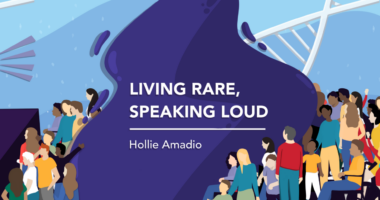Oral On-demand KVD900 Rapidly Reduces HAE Attack Severity

KVD900, an oral experimental on-demand treatment for swelling episodes caused by hereditary angioedema (HAE), safely and significantly reduced the severity of attacks and shorted the time to improvement, which was maintained for 24 hours, according to Phase 2 trial data.
“Our goal is to provide the best outcome for HAE patients experiencing an attack, and that means offering them the ability to treat early in the attack progression to shorten attack duration,” Andrew Crockett, CEO of KalVista Pharmaceuticals, the therapy’s developer, said in a press release.
The trial’s findings were presented by Andrea Zanichelli, MD, a researcher at the Luigi Sacco Hospital–University of Milan, in Italy, at the recent 12th C1-Inhibitor Deficiency & Angioedema Workshop, held virtually for the first time this year.
The presentation was titled, “Fast improvement of HAE attacks with the oral on-demand plasma kallikrein inhibitor KVD900: An analysis of the pharmacokinetic and pharmacodynamic profile of KVD900 and attack symptom severity during a double-blind, randomized phase 2 cross-over trial in patients with HAE type I and II.”
KVD900 is a small molecule that blocks the activity of the enzyme kallikrein, which is overactive in people with HAE due to the lack of a protein called C1-inhibitor, or C1-INH.
Due to inherited mutations in the SERPING1 gene, which encodes C1-INH, people with type 1 HAE have low levels of C1-INH in their bloodstream, whereas those with type 2 HAE produce a version of the protein that malfunctions.
This causes kallikrein to become overactive in both cases, which in turn leads to the excessive production of bradykinin. Bradykinin is an inflammatory molecule that triggers blood vessel dilation and leakiness, ultimately causing tissue swelling. By blocking kallikrein, KVD900 is expected to lower bradykinin levels, thereby reducing or preventing swelling attacks.
The two-part Phase 2 trial (NCT04208412) evaluated the safety and efficacy of a single dose of KVD900 as an on-demand treatment in adults with type 1 and type 2 HAE who experienced three symptomatic attacks in the three months prior to study enrollment.
The study enrolled 68 participants, ages 19–68 (mean 38.3 years), comprising 31 men and 37 women.
In the first open-label part of the trial — in which both researchers and patients know what medications are being given — participants received 600 mg of KVD900. Blood samples were collected from 42 patients over four hours without food restrictions.
The therapy’s pharmacokinetic profile, which measured how the medicine moved into, through, and out of the body, showed the levels of KVD900 rose rapidly in the bloodstream, reaching a maximum within one hour. It blocked nearly all kallikrein activity within 30 minutes.
A total of eight adverse events (7.4%) were reported during the open-label phase. These were all minor, according to Zanichelli, and included headache and dizziness, flushing, back pain, malaise, and nausea.
In the second cross-over part of the trial, conducted in an outpatient setting at home, participants treated two attacks themselves — one with KVD900 and the other with a placebo. The sequence of KVD900 versus placebo was random. Patients were instructed to contact their physician within one hour of the attack, administer treatment, and then record symptoms.
Of those enrolled, 53 completed the study by treating two attacks, which occurred in the abdominal area, arms and legs, genitals, or a combination of abdomen, arms, and legs.
The time to rescue treatment within 12 hours was the trial’s primary outcome, which was previously reported. Briefly, 15% of attacks treated with KVD900 required rescue medicines within 12 hours, while 30% of those treated with a placebo demanded the use of these medications.
Secondary outcomes included the assessment of attack severity based on abdominal pain, skin pain, and swelling. This was evaluated by a visual analog scale (VAS) that ranged from 0 to 100, in which higher scores represented higher severity.
Based on mean VAS scores, KVD900 rapidly eased the most severe attack symptoms, with effects lasting up 24 hours.
KVD900 also eased attack symptoms faster than a placebo. Within six hours, the experimental therapy had lowered VAS scores by 50% in half of the treated attacks. Conversely, placebo-treated attacks required more than 12 hours to achieve the same level of VAS reduction.
By 12 hours, 62.3% of KVD900-treated attacks reached 50% VAS reduction compared with 30.2% of placebo-treated attacks. A similar tendency was observed at 24 hours, with 73.6% of KVD900-treated attacks showing a 50% VAS compared with 37.7% of placebo-treated attacks.
During the placebo-controlled phase, three participants (5.2%) given KVD900 reported adverse events, which included headache, back pain, and abdominal pain. Two adverse events (3.6%), specifically headache and anal incontinence, were reported during placebo treatment.
“The data today reinforce that attacks treated with oral KVD900 experience a rapid improvement in symptoms which is maintained for 24 hours, while also being generally safe and well-tolerated,” said Crockett.
According to Zanichelli, these results will be confirmed in future trials.
“We look forward to providing updates on KVD900’s upcoming Phase 3 program,” Crockett added.
KVD900 received fast track designation from the U.S. Food and Drug Administration to expedite its development. A pediatric investigational plan also has been approved by the European Medicines Agency, which is necessary to initiate studies to support the therapy’s future marketing approval in children.
KalVista also is developing a therapy to prevent HAE swelling attacks, called KVD824, which has shown promising safety in healthy volunteers.





